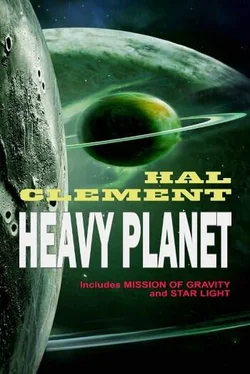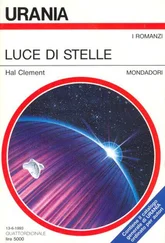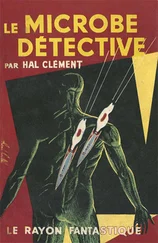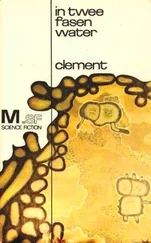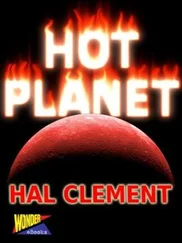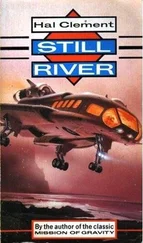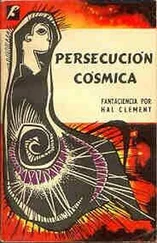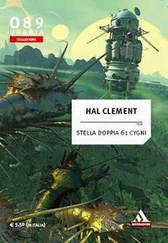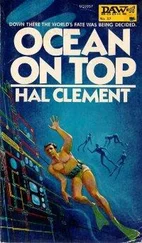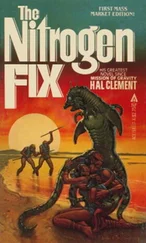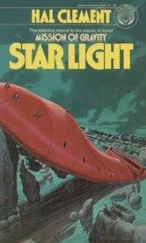Well, Earth’s mean temperature is above the melting point of water, but considerable areas of our planet are permanently frozen. There is no reason why I can’t use the same effects for 61 C; it is an observed fact that the axis of rotation of a planet can be oriented so that the equatorial and orbital planes do not coincide. I chose for story purposes to incline them at an angle of twenty-eight degrees, in such a direction that the northern hemisphere’s midsummer occurs when the world is closest to its sun. This means that a large part of the northern hemisphere will receive no sunlight for fully three quarters of the year, and should in consequence develop a very respectable cap of frozen methane at the expense of the oceans in the other hemisphere. As the world approaches its sun the livable southern hemisphere is protected by the bulk of the planet from its deadly heat output; the star’s energy is expended in boiling off the north polar “ice” cap. Tremendous storms rage across the equator carrying air and methane vapor at a temperature little if any above the boiling point of the latter; and while the southern regions will warm up during their winter, they should not become unendurable for creatures with liquid methane in their tissues. Precession should be quite rapid, of course, because of the tremendous equatorial bulge, which will give the sun’s gravity a respectable grip even though most of the world’s mass is near its center. I have not attempted to compute the precessional period, but if anyone likes to assume that a switch in habitable hemispheres occurring every few thousand years has kept the natives from building a high civilization I won’t argue. Of course, I will also refrain from disagreement with anyone who wants to credit the periodic climate change with responsibility for the development of intelligence on the planet, as our own ice ages have sometimes been given credit for the present mental stature of the human race. Take your pick. For story purposes, I’m satisfied with the fact that either possibility can be defended. The conditions of the planet, basically, are pretty well defined. There is still a lot of detail work. I must design a life form able to stand those conditions-more accurately, to regard them as ideal — which is not too difficult since I don’t have to describe the life processes in rigorous detail. Anyone who wants me to will have to wait until someone can do the same with our own life form. Vegetation using solar energy to build up higher, unsaturated hydrocarbons and animal life getting its energy by reducing those compounds back to the saturated form with atmospheric hydrogen seemed logical enough to me. In the story, I hinted indirectly at the existence of enzymes aiding the reduction, by mentioning that plant tissues would burn in the hydrogen atmosphere if a scrap or two of meat were tossed onto the fuel. The rest of the detail work consists of all my remaining moves in the game — finding things that are taken for granted on our own world and would not be true on this one. Such things as the impossibility of throwing, jumping, or flying, at least in the higher latitudes; the tremendously rapid decrease of air density with height in the same regions, producing a mirage effect that makes the horizon seem above an observer all around; the terrific Coriolis force that splits any developing storm into a series of relatively tiny cells — and would make artillery an interesting science if we could have any artillery; the fact that methane vapor is denser than hydrogen, removing a prime Terrestrial cause of thunderstorm and hurricane formation; the rate of pressure increase below the ocean surface, and what that does to the art of navigation; the fact that icebergs won’t float, so that much of the ocean bottoms may be covered with frozen methane; the natural preference of methane for dissolving organic materials such as fats rather than mineral salts, and what that will do to ocean composition — maybe icebergs would float after all. You get the idea. The trouble was, I couldn’t possibly think of all these things in advance; time and again a section of the story had to be rewritten because I suddenly realized things couldn’t happen that way. I must have missed details, of course; that’s where your chance to win the game comes in. I had an advantage; the months during which, in my spare hours, my imagination roamed over Mesklin’s vast areas in search of inconsistencies. Now the advantage is yours; I can make no more moves in the game, and you have all the time you want to look for the things I’ve said which reveal slips on the part of my imagination. Well, good luck — and a good time, whether you beat me or not.
ADDENDUM TO “WHIRLIGIG WORLD”5
When Mission of Gravity was finished in late 1952, I had a perfectly honest degree in astronomy. I nevertheless made a few mistakes, including one in basic physics; I said, somewhere in the story, that the Bree would sail faster with the wind behind her. Predictably, a sailor caught that one. More seriously, I erroneously took for granted that the figure of rotation which was Mesklin would be an oblate spheroid, and did all the gravity calculation (on a slide rule) assuming that most of its mass was degenerate matter very close to the center. John Campbell told me when he accepted the story that a mathematician had told him that Euler must be spinning in his grave, but I still don’t know what theorem I violated. More usefully, a few years after the story was published, members of the M.I.T. Science Fiction Society (MITSFS) managed to get enough computer time to figure out more nearly what the planet’s shape would be. They were presumably right; all I could console myself with was the realization that I had written the story to give pleasure to people even if that wasn’t quite the specific pleasure I’d had in mind. I eventually did get a computer, wrote a relevant program in BASIC6, and came up with an object looking more like the discus used in field and track sports — an object fairly sharply curved at the poles, much flatter in the midlatitudes, and coming almost to a real edge at the equator. With arbitrarily chosen three g’s at the equator, the polar gravity came out to only about 275, as I recall. I assume that readers with appropriate background knowledge and computer hardware will want to check this. Maybe someone will want to write a book on the things that minor differences in the basic assumptions will do to Mesklin?s shape. Personally, I wound up doing forty years of high school teaching instead of being an astronomer essentially because of my mathematical weaknesses.
HAL CLEMENT is a grand old man of SF, one of the last of the living classic writers of the 1940s/’50s golden age of SF adventure. Here is the core of his accomplishment in two novels, two stories, and an article. Mission of Gravity is his most famous work; its sequel, Star Light, was a Hugo Award nominee, and the essay on Mesklin, the oddly shaped planet featured in the novels, is a foundation document of modern hard SF. Clement is the writer who taught later generations of SF writers — from Poul Anderson to Larry Niven to Gregory Benford, Greg Bear, and many others — how to use science rigorously in SF. His work is as vivid, exciting, and inspiring as ever and a must for anyone who truly loves science fiction.
“Hal Clement brought a new seriousness to the extrapolative hard SF story, and [a] vividness of imagination — his sense that the universe is wonderful. He is a figure of importance to the genre.”
— The Encyclopedia of Science Fiction
“Mission of Gravity is one of the seminal works of ‘hard,’ rigorous science fiction.”
— SFWA Bulletin
“Clement masterfully evokes the rich strangeness of the physical universe.”
Читать дальше
